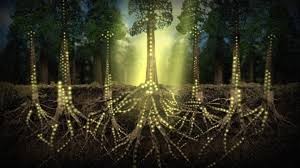Does anyone else ever get bored and watch TED talks in their free time? Well when I can find myself time, which is rarely ever, I like to see what people are researching and the ideas they are coming up with. Some Ted talks are comical, others are sad, but some are quite interesting. As I was scrolling through a list of topics I came across one about “How Trees Talk to Each Other” by Suzanne Simard. I thought to myself, “what the heck? trees do not talk… So I decided to watch it and see what she had to say.
In an 18-minute TED talk, that has 1,740,726 views, Suzanne speaks in hopes of changing people’s views on forests. Suzanne is an ecologist who grew up in the forests of British Colombia. As scientists have found that one root can transfer carbon to another root, she took that idea to a real forest and discovered whether trees can share information below ground. She decided to conduct experiences 25 years ago. She grew 80 replicates of three species: paper birch, douglas fir and red cedar. She placed plastic bags over the trees, injecting carbon-14, the radioactive gas, into the birch, a stable isotope carbon 13 carbon dioxide gas into the fir. She used two isotopes as she wondered if there was two-way communication between these species.
Her hypothesis was that they would transfer underneath the ground in a world of infinite biological pathways. She found the evidence. The C 13 and C 14 was being transferred between the trees. She concluded that these two species were inter-dependent. She had found solid evidence that trees communicate. She has plantation studies that are 30 years old.
The trees were conversing in the way of information, just like us. Now that is some crazy science!
Rich Karban, an ecologist at the University of California, Davis, also discovered that plants communicate with each other. He found that sagebush communicate with each other, sending, receiving and interpreting messages all without a brain. After numerous carefully controlled experiments were repeated in labs, forests and fields, evidence has been established. It has been concluded that when bugs chew leaves, plants respond by releasing volatile organic compounds in the air. In Karban’s study, 40 out of the 48 plant communication studies confirmed that the plants detect the airborne signals and respond with defense mechanisms. The evidence that plants can perceive the volatiles and respond, helps prove that plants can communicate.
I am glad I ended up watching Suzanne’s TED talk because I found it quite interesting that plants can communicate with one another and that there is a whole other world to forests that I had no clue about. With fall making the trees look so gorgeous here at school, this blog post is quite relevant!
Sources:
http://www.ted.com/talks/suzanne_simard_how_trees_talk_to_each_other#t-661469
https://www.wired.com/2013/12/secret-language-of-plants/
https://cavnews.files.wordpress.com/2015/03/connected__trees_1317732637-1024x574_670.jpg


It is really cool that I can know trees can talk to each other! I like to view others posts, it can let me know lots of things that I did not know before. In China, walking on the lawns is prohibited, because Chinese people think that even as plants, they still feel pain. In the beginning, I thought it just for protect the lawn from the destory of citizens. But when I saw your post, I go to google and search for it, the result really shocked me! The plants do feel pain! It is true and scientists have done several experiment to prove that! Know plants can talk and they do feel pain at same time really shocked me! Here is the article talks about several experiments shows plants do feel pain. https://www.theguardian.com/notesandqueries/query/0,,-83446,00.html
Know mroe what I do not know before, is the most fun part of reading post!
Thank you for share this!